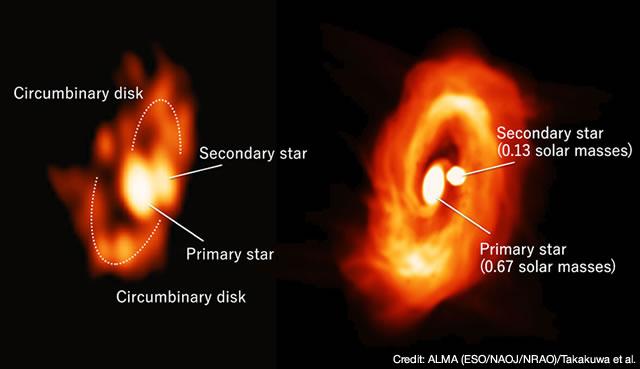With the Atacama Large Millimeter/submillimeter Array (ALMA) observation, astronomers led by Shigehisa Takakuwa, Associate Research Fellow at the Institute of Astronomy and Astrophysics, Academia Sinica (ASIAA), Taiwan, found spiral arms of molecular gas and dust around the “baby twin” stars, binary protostars. Gas motions to supply materials to the twin were also identified. These observational results unveil, for the first time, the mechanism of the birth and growth of binary stars, which are ubiquitous throughout the universe.
The research team used the ALMA telescope to observe the baby-twin star L1551 NE, located in the constellation of Taurus. They found a gas component associated with each binary star, and a disk surrounding both stars, a circumbinary disk, with a radius of 300 au. To understand these newly-identified features, the research team constructed a theoretical model of binary formation in L1551 NE using the supercomputer “ATERUI” at the National Astronomical Observatory of Japan (NAOJ). The research team compared the observed and simulated gas motions around the baby twin stars and identified faster rotating motions in the spiral arms and slower rotating motions in the inter-arm regions. The inter-arm regions also exhibit a falling gas motion toward the central baby twin stars. These results show that the baby twin stars “shake” the surrounding circumbinary disk and induce the falling gas motion to feed the materials to the baby twin.
The study was published on November 20 in The Astrophysical Journal.
Takakuwa et al. “Angular Momentum Exchange by Gravitational Torques and Infall in the Circumbinary Disk of the Protostellar System L1551 NE”
The original article can be found here.
